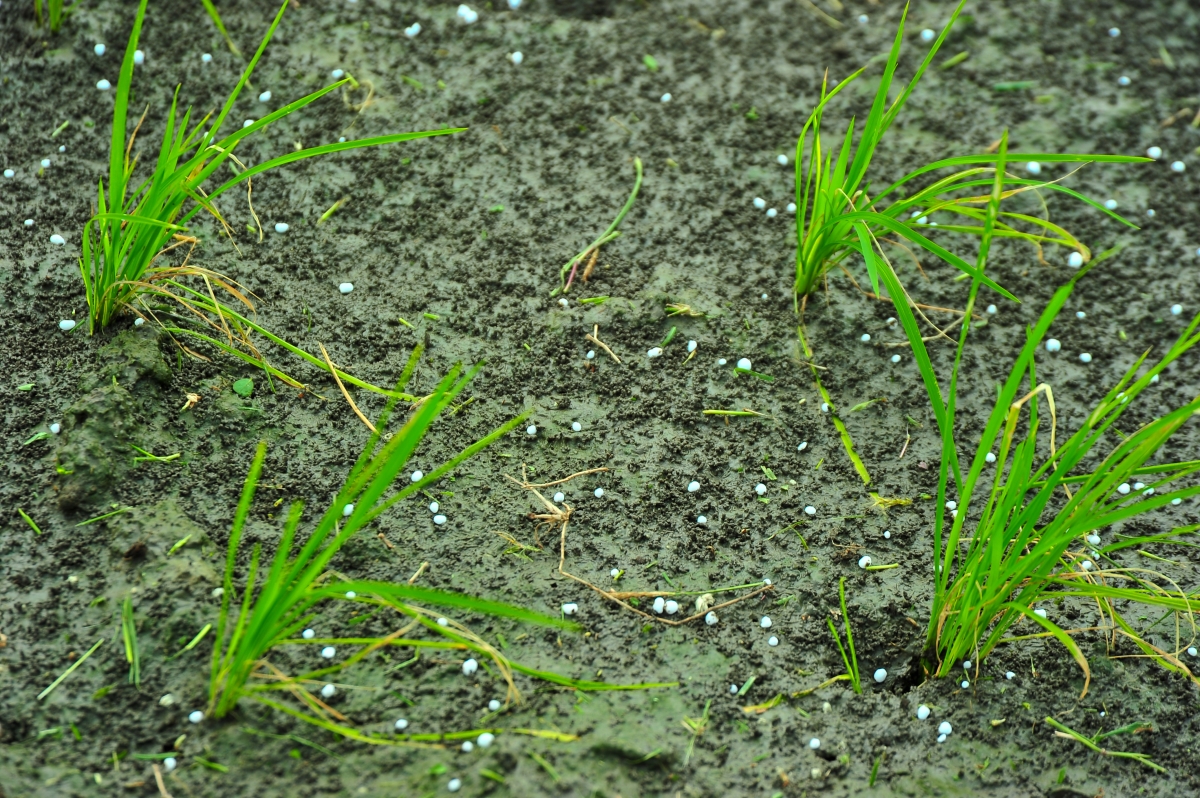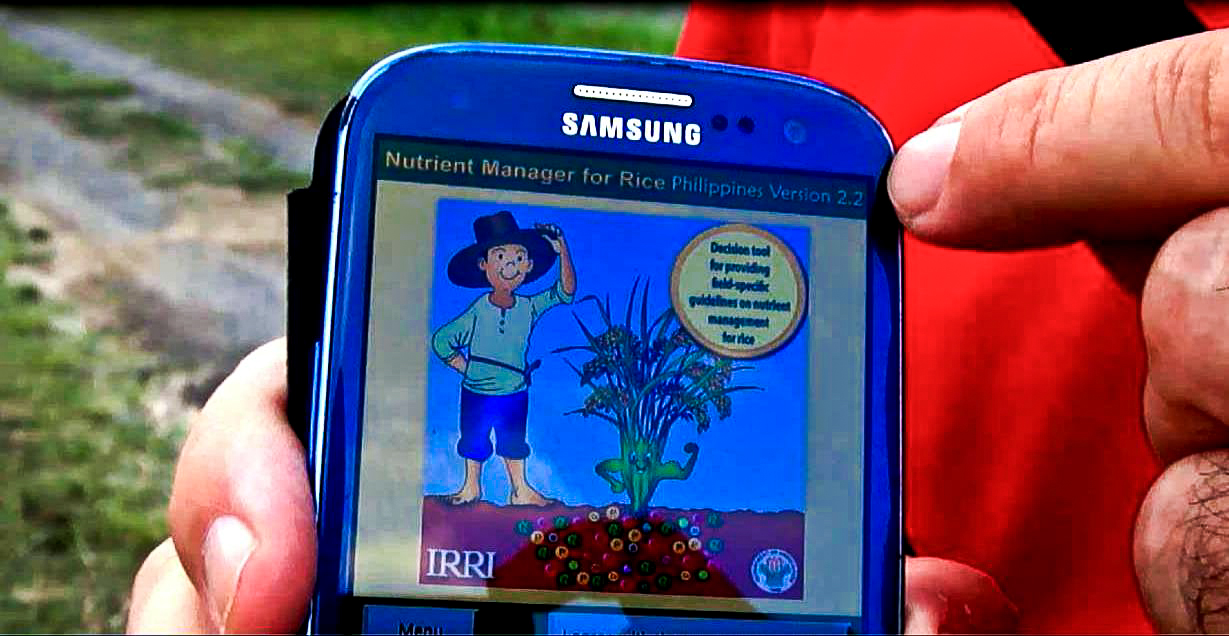Specific fertilizer recommendations in smallholder rice farming systems could increase crop production while reducing pollution and greenhouse gas emissions.

Rice production relies on the use of synthetic fertilizers, especially nitrogen, in order to meet the challenge of rising demand for the commodity driven by population growth. However, the nutrient needs of rice crops are not constant and can vary with fields, seasons, and years because of differences in crop-growing conditions and management. Consequently, the proper management of nutrients for rice production needs to be adjusted to suit field and crop requirements.
Furthermore, the application of external nutrients constitutes the second most expensive rice production input, after labor. As a result, nutrient management is an important component for sustainable rice production while protecting the environment.
Too much of a good thing
The Green Revolution in the mid-20th century resulted in increased crop yields, including rice, in the developing world. Much of this was due to a combination of the introduction of improved varieties and more reliance on the use of synthetic fertilizers, herbicides, and pesticides. However, although the Green Revolution was undoubtedly beneficial in improving food security, it was also associated with a dramatic increase in pollution due to the high use of agricultural chemicals.
Fertilizer recommendations in smallholder rice farming systems are often given as blanket recommendations, but this can lead to the overuse of fertilizers and inefficient use of nutrients. This created a need to find approaches to increase crop production while reducing pollution.
Location-specific information
Soil testing has been promoted to estimate location-specific fertilizer requirements based on the measurement of soil nutrient pools for a field or location. Soil-test methods attempt to measure the proportions of nutrients available for crops, but the amount measured may differ across soils with contrasting properties. Additionally, different tests for one nutrient often provide different results that can be expressed in a variety of ways.
Therefore, soil-test methods need to be calibrated to be used in a specific region. Soil testing requires rapid sequential sampling of soil, laboratory analysis, and timely deployment of a fertilizer recommendation with training for farmers before crop establishment. The effective implementation across hundreds of thousands of fields has been constrained by the high costs involved in sampling and analysis.
In developed countries, precision nutrient management is done using sophisticated technology to monitor variations in nutrient levels within large fields and across seasons. But, this is not applicable for small fields in Asia and Africa.
The site-specific nutrient management (SSNM) approach was developed in the 1990s to enable rice farmers to apply fertilizers and efficiently meet varying nutrient requirements of plants, thereby reducing fertilizer misuse associated with fertilizer subsidy.
The approach is used to calculate field-specific requirements for fertilizer nitrogen, phosphorus, and potassium for cereal crops based on scientific principles with the aim to increase nutrient-use efficiency. SSNM has improved rice yields compared with the farmers’ practice often based on blanket recommendations.

Timing is everything
The SSNM approach, however, does not aim to increase or reduce the amount of fertilizer used. The increase in grain yield with lower amounts of fertilizer has been associated with the better timing of application, particularly for nitrogen. Farmers apply a greater proportion of the nitrogen fertilizer in the early stages of the crop, causing higher vigor during early growth, which does not translate into higher grain yield at maturity.
In recent years, SSNM has been identified as one of the options for sustainable intensification of rice production in Asia and as a climate-smart technology for increasing resource-use efficiency while reducing greenhouse gas emissions and nutrient runoff into water sources.
The SSNM approach relies heavily on information generated from nutrient omission plot trials that are used to estimate fertilizer requirements for major nutrients (nitrogen, phosphorus, and potassium). Briefly, nutrient omission plots are small field trials in which adequate nutrients—except the nutrient of interest—are applied to a plot in order to estimate the supply of the omitted nutrient from indigenous sources such as soil, crop residues, irrigation water, biological nitrogen fixation, and atmospheric deposition. This is used to calculate the amount of fertilizer required to achieve a given yield target.
Phosphorus and potassium are generally applied at sowing or transplanting while nitrogen is applied at different crop stages. Thirty percent of the nitrogen is applied at transplanting and the rest is equally split at critical rice growth stages: active tillering and panicle initiation. Alternatively, the nitrogen splits can be determined using leaf color charts.
Rice production in Asia is largely done by smallholder farmers who often lack access to information. For sustainability, there is a need to develop tools that are accessible to farmers. Using the principles of SSNM, an information and communication technology decision support tool, Nutrient Manager, was developed to give field-specific fertilizer recommendations for smallholder farmers.
Nutrient Manager targets irrigated and rainfed lowland rice farmers with the aim to increase productivity and net income by USD 100 per hectare per season at the farm level. The tool has been widely tested and used in the Philippines, India, Bangladesh, and Vietnam, and has led to an increase in farm productivity and profitability. The tool was later developed into the Rice Crop Manager in the Philippines and India, which give climate-informed agro-advisory services to farmers, including the selection of suitable varieties. (See An app tailor-made for India’s rice farmers.)
Although the tool has effectively improved productivity in 80% of the locations where it has been tried, there is room to expand the fertilizer recommendations for a wider set of conditions. Additionally, dissemination of the tool needs to be boosted to give more rice farmers access to smarter and more sustainable fertilizer management.
_______________________
Dr. Chivenge is a soils and biogeochemistry expert at the International Rice Research Institute (IRRI). Dr. Sharma leads IRRI’s research on the design, evaluation, and dissemination of soil and nutrient management technologies for the rice-based systems of South Asia.






